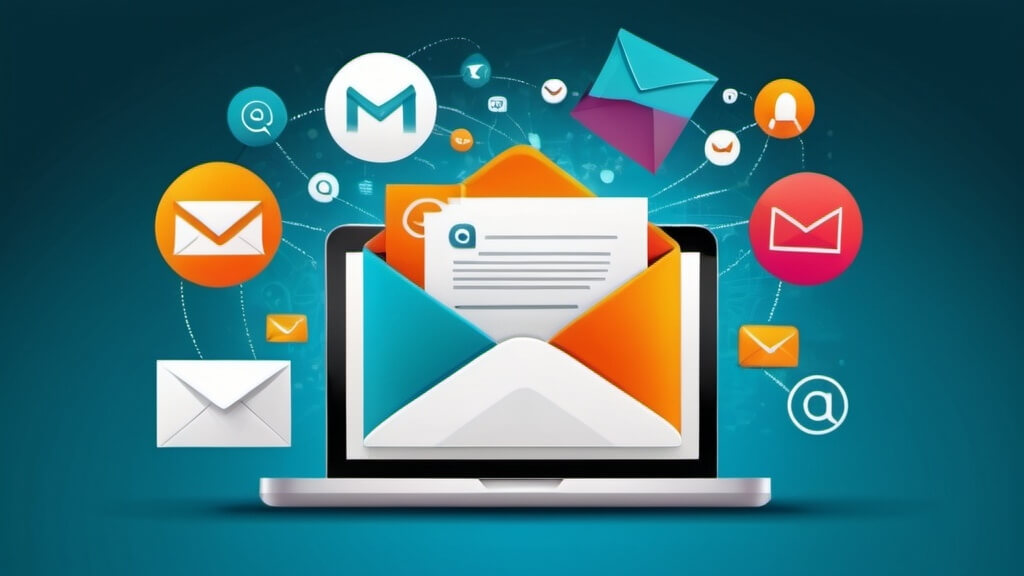Choosing an email provider can be a difficult decision, as there are many options with different offerings. They vary in price, features, and complexity.
If you’re looking for an email service for your domain, the first decision is whether you want to create one or more email accounts or if you’re just looking for email forwarding.
Email Forwarding
Email forwarding is where you set up an email address that can only receive emails and forward them on. There is no email account you can log into. When an email is received by an email forward, the email system automatically and instantly forwards that email to the recipients of the forward.
Let’s take an example. John has a domain called johnsdomain.com. He wants to set up the address [email protected]. His personal email address is [email protected]. John sets up a forward for [email protected] to his Gmail address. John can now publish the [email protected] email address for people to use. If someone sends an email to [email protected], he will receive it in his Gmail account, mixed in with his other emails.
However, if John replies to that email, the reply will not be sent from [email protected]. The reply will instead be sent from John’s Gmail address, which doesn’t look very professional. In fact, no email will ever be sent from [email protected] as the address is only able to receive emails and forward them on.
Email Accounts
An email account (also known as a mailbox) is an email address that has an inbox that can contain folders and can send and receive emails. If an email is sent to an email account, it goes into the inbox of the email account instead of being forwarded on.
With an email account, you can typically check and manage the emails in several ways. There is usually a webmail system you can log in to using any web browser.

You can use a desktop email client such as Microsoft Outlook, Mozilla Thunderbird, or Apple Mail. When you set an email client up, it will automatically monitor the email account as long as the program is open.
You can use an app on your smartphone or tablet. These work similarly to an instant messaging app where you get notified when there is a new email and can open the app to read and reply to messages. There are many apps that will work with any email provider, such as the Gmail app on Android and the built-in Mail app from Apple on iOS, but your email provider may also offer their own app specific to their email service in some cases.
If you’re a Gmail user, there is a feature in the Gmail webmail to automatically link your Gmail account to an external email account, allowing you to send and receive emails from your own domain directly in the Gmail webmail.
Where Should I Get an Email Account or Email Forwarding From?
The first place to check would be your domain registrar, as there might be some form of email service included with your domain. Many domain registrars include email forwarding for free. It’s less common for email accounts to be included.
The Big Players

There are two email services that stand out due to their huge market share: Google Workspace and Microsoft 365 (formerly Office 365).
Both of these services are roughly equivalent in features, pricing, and how they work, so which one someone picks often comes down to a preference between Google products and Microsoft products.
As far as features are concerned, there isn’t much these two products can’t do, and they are very reliable, so for many, it’s a simple choice to use one of these.
However, there are reasons why these are not the most appropriate service for all users.
For many users looking for a simple email account to get started with on their domain, Google Workspace and Microsoft 365 can both be too complicated. They can be difficult to set up for the novice user and difficult to operate when it comes to making simple changes.
Another reason Google Workspace and Microsoft 365 are perhaps not the best solution for everyone is the cost. The price does vary by market, so we aren’t including the price in this article, but it’s likely neither service will be particularly cheap when compared to less well-known alternatives.
Postale.io
Postale.io excels in providing a simpler email service at a bargain price with excellent support. Although they don’t have all the features of the big players, they still offer all the features most users want, such as email client access, a modern webmail interface, email filters, and out-of-office replies. It’s easy to set up, and their support is fast, helpful, and very personable. Their prices start from $1 a month for two email accounts. This only includes 1GB of storage for each account, but that’s enough for most new email accounts for several years.
Zoho
Zoho is another popular provider that combines advanced features with low pricing. They have a free plan available, and their paid plans start from just $1 per month. However, their support is not as good as Postale.io and some other small providers.

